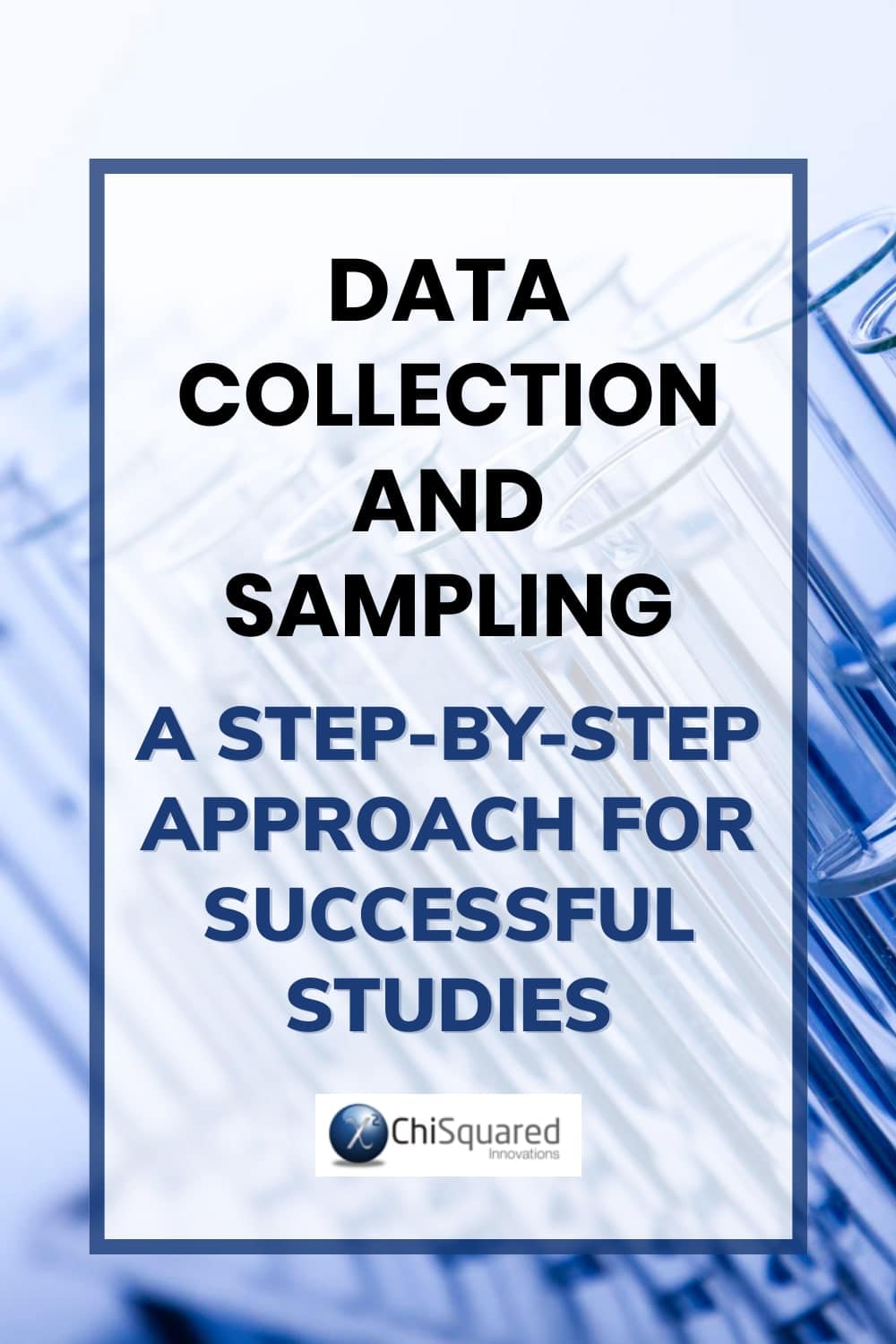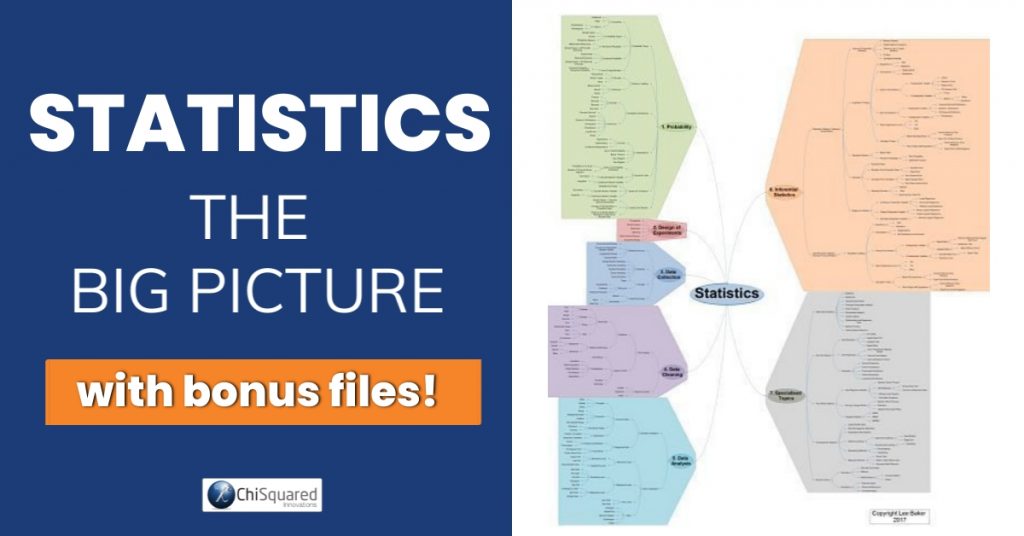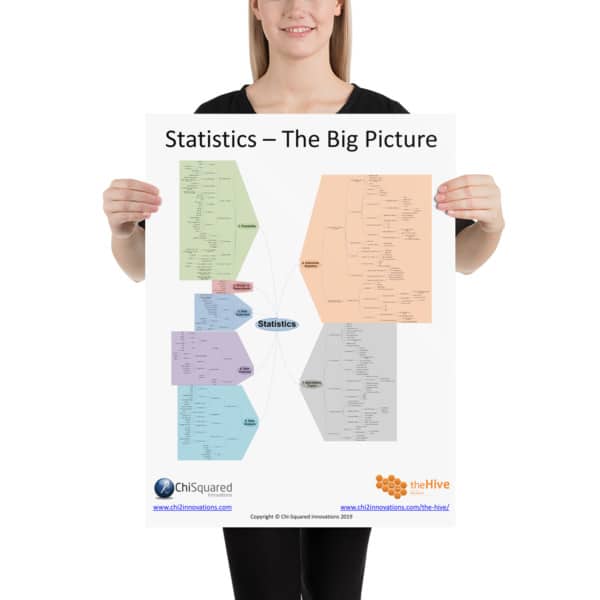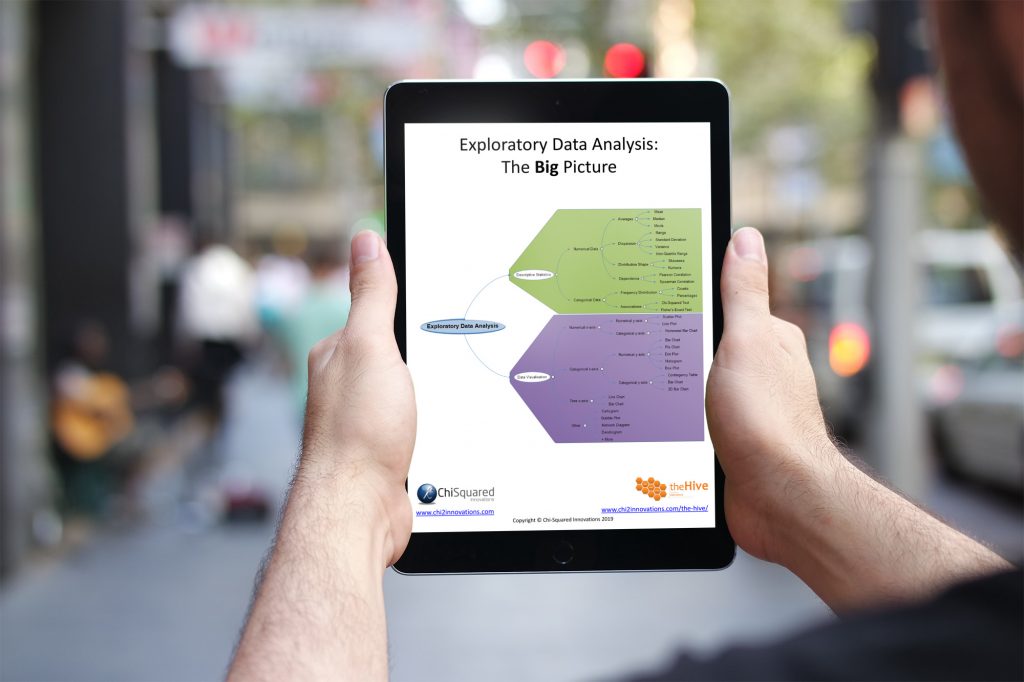Hey there, Data Ninja! Ready to unlock the secrets of data collection and sampling? Strap in, because we're about to embark on an epic adventure of turning raw data into gold. Okay, maybe not gold, but definitely valuable insights.
Discover more in this blog series...
Introduction to Data Collection and Sampling: Why Data Collection Matters
So, you want to be a master of data-driven decision-making? It all starts with data collection. It's like the foundation of a great building—without a solid base, everything crumbles. In our data-driven world, being equipped with reliable data is essential for making informed choices.
The Quest for Quality Data
Before we dive into the nitty-gritty, let's talk about the holy grail of data: quality. You don't want to base your decisions on dodgy data, right? Nah, we thought so. That's why we're here to guide you through the steps of collecting data that's trustworthy and, dare we say, fabulous.
Qualitative vs. Quantitative: The Battle Begins
It's time for a face-off: qualitative vs. quantitative data. Don't worry, it's not a cage match; it's more like a friendly sparring session. We'll help you understand the differences between these two types of data, so you can choose the right approach for your specific goals.
Getting Your Game Plan Ready
Now that you're all fired up about data collection, it's time to strategize. Grab your thinking cap and define your research objectives. A clear game plan will guide you through the labyrinth of data and ensure you're heading in the right direction.
The Thrilling Steps Ahead
Hold on tight, because we're about to embark on a thrilling adventure. We'll walk you through a step-by-step approach that covers everything from selecting the best sampling methodology to ensuring data validation and quality assurance. Get ready to level up your data collection skills like never before and we'll equip you with the knowledge and techniques to conquer the data world!
More...
Disclosure: This post contains affiliate links. This means that if you click one of the links and make a purchase we may receive a small commission at no extra cost to you. As an Amazon Associate we may earn an affiliate commission for purchases you make when using the links in this page.
You can find further details in our TCs
Understanding the Importance of Data Collection in Research
Let's talk about the unsung hero of research: data collection. Yeah, I know, it sounds about as exciting as watching paint dry, but trust me, it's the secret sauce that gives your studies that extra oomph.
The Power of Data-Driven Decision-Making
Imagine this: You're standing at a crossroads, trying to make a decision that could shape the course of your project. Do you rely on gut feelings and guesses? Heck no! You want hard facts, solid evidence, and data that has your back. That's why data collection is the superhero of research, empowering you to make informed decisions that leave no room for doubt.
Data: The Fuel for Insights
Let's face it, insights don't just magically appear out of thin air. They're the product of carefully collected and analysed data. Without it, you're just wandering in the dark, blindly hoping for a stroke of genius. But with data in your arsenal, you can shine a spotlight on hidden patterns, unearth valuable trends, and unlock the secrets of your chosen domain.
It's All About Accuracy and Reliability
In the world of research, accuracy and reliability are like the dynamic duo. They go hand in hand, ensuring your findings are solid and trustworthy. Without accurate and reliable data, your study might as well be a unicorn sighting—a cool story, but not something you can build your research empire upon.
So, embrace the importance of data collection in your research endeavours. It's the key that unlocks a world of possibilities and sets you on the path to becoming a true data master. In the next section, we'll dive into the different types of data—qualitative and quantitative—and explore how they play their unique roles in the grand scheme of things.
Pin it for later

Need to save this for later?
Pin it to your favourite board and you can get back to it when you're ready.
Types of Data: Qualitative and Quantitative
Alright, time to explore the wonderful world of data. But before we dive headfirst into the sea of numbers and narratives, let's first understand the two key players: qualitative and quantitative data. They're like the yin and yang of the data universe, each with their own unique charms.
Unleashing the Power of Qualitative Data
Picture this: you're knee-deep in interviews, focus groups, and open-ended questions. That's the realm of qualitative data, where we get up close and personal with the rich tapestry of human experiences. It's all about uncovering deep insights, diving into the nuances, and capturing the essence of what makes your data unique. So, if you love untangling stories and decoding meaning, qualitative data will be your partner in crime.
Embracing the Numbers: Quantitative Data
On the other side of the data spectrum, we have the mighty quantitative data. It's all about the numbers, the cold hard facts that make statisticians swoon. Think surveys, measurements, and structured questionnaires. With quantitative data, we're all about precision, patterns, and uncovering trends that might have otherwise remained hidden. So, if you're a fan of crunching numbers and unleashing the power of statistics, quantitative data will be your trusty sidekick.
But here's the best part: you don't have to choose sides! Both qualitative and quantitative data can join forces, complementing each other in the pursuit of knowledge. It's like having a dynamic duo that covers all bases, giving you a well-rounded perspective and strengthening the validity of your research.
So, embrace the duality of data. In the next section, we'll help you define your research objectives, setting the stage for a truly epic data collection and sampling adventure.
How to do Statistics - Do you know all 7 parts of the statistics universe? #statistics #datascience @chi2innovations
Defining the Research Objective and Designing a Study
It's time to set sail on the vast sea of research. But before you hoist those sails, you need a clear destination in mind. We're talking about defining your research objective and designing a study that'll make waves in the data world.
Charting Your Research Course
Imagine you're a fearless explorer, ready to conquer uncharted territories. Well, your research objective is like your treasure map, guiding you towards your ultimate goal. So, grab your compass, sharpen your pencils, and let's define what you want to achieve. Are you looking to uncover hidden market trends? Solve a scientific mystery? Or maybe you're just curious about the quirks of human behaviour. Whatever it is, defining your research objective is the first step on your epic journey.
Building the Study Blueprint
Alright, now that you've got your research objective locked and loaded, it's time to design a study that'll make Sherlock Holmes jealous. Think of it as creating the blueprint for your research adventure. How will you collect your data? What methods will you use? Surveys, interviews, observations?
The Art of Fine-Tuning
Now that your research ship is taking shape, it's time for some fine-tuning. Consider potential challenges, anticipate roadblocks, and devise strategies to overcome them. A well-designed study takes into account all the nitty-gritty details, ensuring you sail smoothly towards your research objective.
So, get your research gears turning. In the next section, we'll unleash the secret power of sampling methodologies, helping you choose the right path to collect data like a true data warrior!
Step 1: Choosing the Sampling Methodology
Ready to tackle the first step in our epic data collection journey? It's time to dive into the mysterious realm of sampling methodologies.
Unveiling the Sampling Secrets
Sampling is like assembling a squad of data warriors to represent the larger population. But how do you choose the right warriors? It's like forming a fantasy football team, but with data instead of football players. You want a diverse, representative bunch that can tackle any challenge thrown their way. Whether it's simple random sampling, stratified sampling, or the flashy cluster sampling, each methodology has its own strengths and quirks.
The Quest for Sample Size Awesomeness
Now that you've chosen your sampling methodology, let's talk about the next crucial step: sample size. Think of it as the number of warriors in your data army. Too small, and you risk missing important trends; too large, and you might end up drowning in data overload.
Embracing the Sampling Strategy
Sampling isn't just about blindly picking names out of a hat. It's a strategic process that requires careful planning. You need a clear sampling strategy to ensure your data warriors are recruited fairly and effectively.
Step 2: Determining the Sample Size
You’ve mastered the art of choosing your sampling methodology. Now it's time to tackle the next critical step: determining the perfect sample size.
The Sample Size Conundrum
Picture this: you're at an all-you-can-eat buffet, faced with a difficult decision. How much food should you put on your plate? Well, determining the sample size is a bit like that, but instead of food, it's data. You want enough data to satisfy your research hunger, but not so much that you end up with data-induced indigestion. It's a delicate balance.
Power, Confidence, and Precision
When it comes to sample size, it's all about power, confidence, and precision. Think of them as your research allies, fighting by your side to ensure your study leaves a lasting impact. You want a sample size that's powerful enough to detect meaningful effects, confident enough to make accurate conclusions, and precise enough to avoid unnecessary noise. It's like finding the Goldilocks zone of data—just right.
Step 3: Sampling Techniques: Probability vs. Non-Probability Sampling
Welcome to the wild and wonderful world of sampling techniques. It's time to choose your weapon of choice: probability or non-probability sampling.
Embracing the Odds: Probability Sampling
Imagine you're in a casino, playing a game of chance. Probability sampling is like placing your bets on the roulette wheel, but instead of numbers, you're betting on data. It's all about giving each member of the population an equal chance to be selected. So, if you're a fan of randomness and fairness, probability sampling will be your card up the sleeve.
Going with Your Gut: Non-Probability Sampling
Non-probability sampling is like relying on your instincts. You handpick participants based on specific criteria or your own judgment. It's like assembling a dream team of data superheroes. While it may not be as statistically rigorous as probability sampling, it has its own unique charm. So, if you prefer a more targeted approach and trust your gut, non-probability sampling might be your secret weapon.
The Battle of Trade-Offs
Like any good battle, each sampling technique has its strengths and weaknesses. Probability sampling brings statistical validity to the table, but it can be time-consuming and resource-intensive. On the other hand, non-probability sampling is quick and convenient, but it comes with limitations in generalizability. It's a classic case of trade-offs. You need to choose the technique that best suits your research goals.
Step 4: Data Collection Tools and Techniques
Alright, it's time to arm yourself with the right tools and techniques for data collection. Think of it as assembling your trusty ninja gear, but instead of shurikens and nunchucks, we're talking about surveys, interviews, and observations!
Surveys: The Questionnaire Quest
Surveys—the noble art of posing questions to gather insights. Get ready to craft the perfect questionnaire. Design questions that are clear, concise, and capable of extracting the information you seek. Remember, a well-designed survey is like a well-aimed dart hitting the bullseye of data.
Interviews: Unmasking the Data Truth
Prepare to don your detective hat, as you dive into the world of interviews. Interviews give you the power to unravel the deepest secrets hidden within your data. Choose your interviewees wisely, establish rapport, and skilfully extract the juicy titbits that will enrich your study. Remember, the key to successful interviews lies in listening and asking the right questions.
Observations: Stealthily Watching the Data Dance
Ah, the art of observation—where you become the silent observer, carefully noting every move, every interaction. Like a ninja in the shadows, you'll capture the essence of the data in its natural habitat. Be meticulous, keen-eyed, and document your observations with precision. The secrets of the data universe will reveal themselves to you.
Step 5: Data Validation and Quality Assurance
You've collected a treasure trove of data, but we're not done yet. It's time to embark on a daring quest to validate and ensure the quality of your precious findings.
The Art of Data Validation
Data validation—a delicate dance of truth and deception. It's like separating the signal from the noise, the genuine from the bogus. With your sharp eyes and keen sense of scrutiny, you'll spot those rogue data points and outliers that threaten to sabotage your findings. It's time to wield your validation sword and ensure only the most reliable data survives.
Quality Assurance: Slaying the Dragon of Errors
Imagine you're a mythical creature, a vigilant dragon slayer on a mission to eliminate errors and biases lurking in your data. Quality assurance is your armour, protecting your study from the clutches of inaccuracy. From data entry mistakes to measurement errors, you'll face them head-on and emerge victorious. So, don your QA cape and show those errors who's boss!
The Quest for Reliable Findings
As a seasoned Data Ninja, you understand the importance of reliable findings. Your research deserves nothing less! By implementing robust validation techniques and stringent quality assurance measures, you'll bolster the trustworthiness of your results.
Step 6: Data Analysis and Interpretation
Get ready to don your thinking cap and embark on a thrilling adventure of data analysis and interpretation!
The Great Data Puzzle
Picture this: you're faced with a jigsaw puzzle of numbers, charts, and graphs. It's like piecing together a complex mystery where the clues lie within the data. With your keen eye for patterns and trends, you'll decode the puzzle and unearth the insights that lie within.
The Dance of Statistics
Statistics. The elegant waltz of numbers. Embrace your inner maestro as you conduct this intricate dance. From descriptive statistics to inferential analysis, you'll perform a symphony of calculations and tests to uncover the truth hidden within your data. But remember, statistics can be a tricky partner. Stay vigilant and interpret the results with care.
Drawing Meaningful Conclusions
You've deciphered the data, you've crunched the numbers, and now it's time to draw meaningful conclusions. This is where the true magic happens. You'll connect the dots, link the findings to your research objectives, and weave a compelling narrative that tells the story of your study. Let your insights shine and leave a lasting impact.
In the final section, we'll wrap it all up, summarizing the key takeaways and empowering you to embark on future data adventures.
Discover more in this blog series...
Conclusion: Key Takeaways for Successful Studies
Now, let's wrap it all up with some key takeaways that will equip you for future triumphs!
Embrace the Power of Planning
Remember, success begins with a well-thought-out plan. Define your research objectives, choose your sampling methodology wisely, and design a study that sets you up for victory.
Precision is Your Superpower
Ensure your sample size is just right, select the appropriate sampling technique, and validate your data with a critical eye. Your precision will fortify the credibility of your findings and leave no room for doubt.
Analyse Like a Sherlock
Data analysis is where the magic happens. Embrace the art of statistics, decode the patterns within your data, and draw meaningful conclusions that tell a compelling story.
Continuous Learning and Growth
Your journey as a Data Ninja doesn't end here. Embrace a mindset of continuous learning and growth. Stay updated with the latest techniques and tools, seek feedback, and refine your skills. Remember, every study is an opportunity to level up your expertise.
Congratulations! You've conquered the realm of data collection and sampling. Armed with this step-by-step approach, you're ready to tackle any research challenge that comes your way.
Keep exploring, keep learning, and always remember: the data universe is yours to conquer!
Statistics - The Big Picture: PDF Download
In Statistics - The Big Picture I delve deep into each of these 7 sections so you can see where all the different parts of stats fits in relation to everything else. It helps you to plan every element of your study from beginning to end so you can plot a route through The Big Picture, leaving nothing to chance in your research.
If you want your very own Statistics - The Big Picture to download and keep, you can get an Ultra HD pdf right here (with 50% off!):



